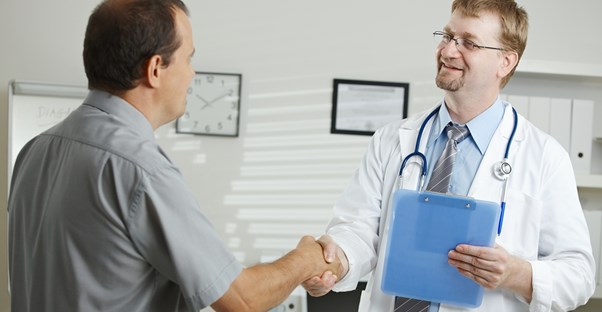Avoiding life-threatening medical problems through routine evaluations is one way to insure a longer and healthier life. Having a good knowledge of basic procedures helps to make a better choice when your physician suggests further evaluations. Here's a look at how colonoscopies and endoscopies are alike and different to give you a better understanding of the terms when needing a more in-depth exam.
Endoscopy
An endoscopy is a procedure in which a small lighted scope with a video camera, known as an endoscope, is threaded down a patient's throat to look at the esophagus, stomach, and small intestine. As the scope passes through the areas, the physician views the video on a colored monitor, looking for abnormalities in each area.
People suffering from unexplained stomach pain, gas, difficulty swallowing, bleeding from the digestive tract, polyps in the colon, or changes in bowel functions such as diarrhea or constipation may be required to get an endoscopy. Polyps can also be removed during this exam, thus eliminating the need to do a second procedure. Special devices are passed through the endoscope to stop bleeding from ulcers and to remove gallstones that have relocated into the bile duct. Your internist, a gastroenterology specialist, or your family physician may perform an endoscopy.
Preparation for an upper digestive tract endoscopy entails fasting for six to eight hours before the procedure. Right before the procedure, the patient is sedated. Patients usually have little recall of the actual exam. Since the effects of the sedatives may not wear off for 24 hours, patients are asked not to drive until the following day.
Colonoscopy
A colonoscopy is a form of endoscopy, but the camera is inserted through the rectum. An endoscopy is specifically used to examine the internal rectal area as well as the large intestines. The physician looks for tumors, polyps, inflammation, or ulcers in the lining of the colon that may indicate potential risks of cancer. If you have experienced pain in the abdominal area, sudden weight loss or gain, bleeding from the rectum, or sudden changes in bowel movements, a colonoscopy may be recommended. Physicians recommend a colonoscopy every 10 years after the age of 50.
The procedure itself involves a rigid preparation involving a liquid diet three days prior to the exam, drinking only liquid gelatin, fruit juice, tea, fat free broth, and coffee. The day before the procedure, you must empty your bowels thoroughly, commonly by using an enema and laxative. This is highly important to give the physician a free view of the colon. During the procedure, sedation is used as well as a local anesthesia. Driving is not advised in the 24-hour period after the procedure.
Conclusion
Endoscopy and colonoscopy, a form of endoscopy, have proven to save lives. Early detection of esophageal, stomach and colon cancers are much more successful when detected and treated early. Both require some preparation and limited activity for a day after. However, the advantage of catching a serious medical issue is worth the effort.




